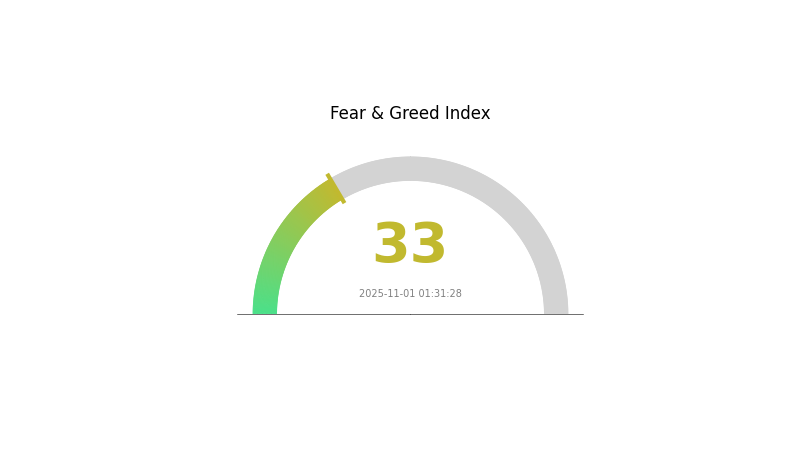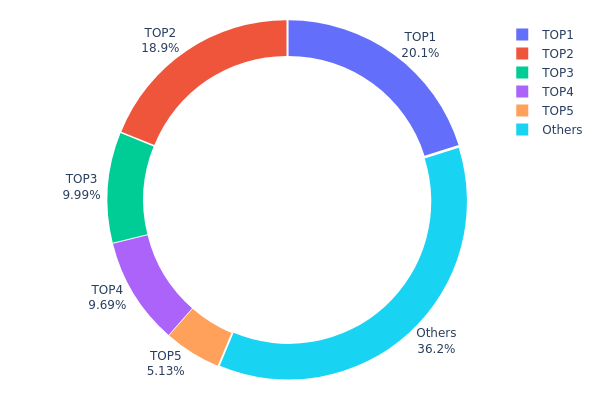2025 SKAI Price Prediction: Analyzing Market Trends and Potential Growth Factors
Introduction: SKAI's Market Position and Investment Value
Skillful AI (SKAI) has emerged as a pioneering platform in the personalized AI ecosystem since its inception. As of 2025, SKAI's market capitalization stands at $169,375, with a circulating supply of approximately 113,370,157 tokens and a price hovering around $0.001494. This asset, hailed as the "AI Empowerment Token," is playing an increasingly crucial role in advancing virtual assistance and tailor-made AI solutions.
This article will comprehensively analyze SKAI's price trends from 2025 to 2030, considering historical patterns, market supply and demand, ecosystem development, and macroeconomic factors to provide investors with professional price predictions and practical investment strategies.
I. SKAI Price History Review and Current Market Status
SKAI Historical Price Evolution
- 2024: SKAI reached its all-time high of $0.25 on June 9, 2024
- 2025: SKAI hit its all-time low of $0.00111 on July 11, 2025
- 2025: Market cycle decline, price dropped from the high of $0.25 to the current $0.001494
SKAI Current Market Situation
As of November 1, 2025, SKAI is trading at $0.001494. The token has experienced significant volatility over the past year, with a 94.44% decline in value. In the last 24 hours, SKAI has seen a slight decrease of 0.66%, with a trading volume of $10,286.44. The current market capitalization stands at $169,375.02, ranking SKAI at 4527 in the global cryptocurrency market. The circulating supply is 113,370,157.66 SKAI, which represents 11.34% of the total supply of 1 billion tokens.
Click to view the current SKAI market price

SKAI Market Sentiment Index
2025-11-01 Fear and Greed Index: 33 (Fear)
Click to view the current Fear & Greed Index
The crypto market is currently gripped by fear, as reflected in today's Fear and Greed Index of 33. This sentiment suggests investors are becoming increasingly cautious, potentially leading to selling pressure. However, for seasoned traders, periods of fear often present buying opportunities. It's crucial to remember that market sentiment can shift rapidly, and conducting thorough research before making any investment decisions is always recommended. Stay informed and trade wisely on Gate.com.

SKAI Holdings Distribution
The address holdings distribution data provides crucial insights into the concentration of SKAI tokens among various addresses. Analysis of this data reveals a significant level of centralization in SKAI's ownership structure. The top five addresses collectively hold 63.8% of the total supply, with the largest holder commanding 20.14% of all tokens.
This concentration raises concerns about potential market manipulation and price volatility. With such a large portion of tokens in few hands, any significant movement by these major holders could substantially impact SKAI's market dynamics. The top two addresses alone control nearly 40% of the supply, which could lead to increased price fluctuations if large-scale buying or selling occurs.
While some level of concentration is common in many cryptocurrencies, SKAI's current distribution suggests a relatively low degree of decentralization. This may impact the token's resilience to market shocks and its ability to maintain a stable on-chain structure. Potential investors should be aware of these concentration risks when considering SKAI as part of their portfolio.
Click to view the current SKAI Holdings Distribution

| Top | Address | Holding Qty | Holding (%) |
|---|---|---|---|
| 1 | 0x1dde...82beee | 201443.61K | 20.14% |
| 2 | 0x1b81...1a8e20 | 188800.00K | 18.88% |
| 3 | 0x8a69...e56b06 | 99870.90K | 9.98% |
| 4 | 0x8791...cb1540 | 96863.86K | 9.68% |
| 5 | 0xa988...99edd0 | 51287.05K | 5.12% |
| - | Others | 361734.57K | 36.2% |
II. Key Factors Affecting SKAI's Future Price
Supply Mechanism
- Manufacturing Cost Reduction: The cost of photovoltaic components is expected to decrease due to improvements in production efficiency and technology advancements.
- Historical Pattern: As manufacturing costs have declined, it has historically led to lower prices for solar energy products.
- Current Impact: The ongoing reduction in manufacturing costs is anticipated to exert downward pressure on SKAI's price.
Macroeconomic Environment
- Inflation Hedging Properties: As a renewable energy asset, SKAI may be viewed as a potential hedge against inflation in certain economic scenarios.
Technological Developments and Ecosystem Building
- Efficiency Improvements: Advancements in photovoltaic technology are expected to increase the efficiency of solar panels, potentially affecting SKAI's value proposition.
- Ecosystem Applications: The growth of the renewable energy sector and increased adoption of solar technology in various applications could drive demand for SKAI.
III. SKAI Price Prediction for 2025-2030
2025 Outlook
- Conservative forecast: $0.00081 - $0.00149
- Neutral forecast: $0.00149
- Optimistic forecast: $0.00157 (requires favorable market conditions)
2026-2027 Outlook
- Market phase expectation: Gradual growth phase
- Price range predictions:
- 2026: $0.00084 - $0.00162
- 2027: $0.0012 - $0.00164
- Key catalysts: Increased adoption and technological advancements
2028-2030 Long-term Outlook
- Base scenario: $0.00161 - $0.00204 (assuming steady market growth)
- Optimistic scenario: $0.00204 - $0.00241 (assuming strong market performance)
- Transformative scenario: $0.00241+ (assuming exceptional market conditions and widespread adoption)
- 2030-12-31: SKAI $0.00241 (potential peak price)
| 年份 | 预测最高价 | 预测平均价格 | 预测最低价 | 涨跌幅 |
|---|---|---|---|---|
| 2025 | 0.00157 | 0.00149 | 0.00081 | 0 |
| 2026 | 0.00162 | 0.00153 | 0.00084 | 2 |
| 2027 | 0.00164 | 0.00158 | 0.0012 | 5 |
| 2028 | 0.00172 | 0.00161 | 0.00097 | 7 |
| 2029 | 0.00241 | 0.00167 | 0.00142 | 11 |
| 2030 | 0.00241 | 0.00204 | 0.00108 | 36 |
IV. SKAI Professional Investment Strategies and Risk Management
SKAI Investment Methodology
(1) Long-term Holding Strategy
- Suitable for: Long-term investors with high risk tolerance
- Operation suggestions:
- Accumulate SKAI tokens during market dips
- Set up regular purchases to average out price fluctuations
- Store tokens in a secure hardware wallet
(2) Active Trading Strategy
- Technical analysis tools:
- Moving Averages: Use to identify trends and potential reversals
- Relative Strength Index (RSI): Monitor overbought/oversold conditions
- Key points for swing trading:
- Set clear entry and exit points based on technical indicators
- Implement strict stop-loss orders to manage risk
SKAI Risk Management Framework
(1) Asset Allocation Principles
- Conservative investors: 1-3% of crypto portfolio
- Aggressive investors: 5-10% of crypto portfolio
- Professional investors: 10-15% of crypto portfolio
(2) Risk Hedging Solutions
- Diversification: Spread investments across multiple AI-related tokens
- Stop-loss orders: Implement to limit potential losses
(3) Secure Storage Solutions
- Hot wallet recommendation: Gate Web3 Wallet
- Cold storage solution: Hardware wallet for long-term holdings
- Security precautions: Enable two-factor authentication, use strong passwords
V. Potential Risks and Challenges for SKAI
SKAI Market Risks
- High volatility: Significant price fluctuations common in the crypto market
- Limited liquidity: Potential difficulties in executing large trades
- Market sentiment: Susceptible to rapid changes based on news or trends
SKAI Regulatory Risks
- Uncertain regulations: Potential for new laws affecting AI tokens
- Cross-border restrictions: Varying legal status in different jurisdictions
- Compliance challenges: Adapting to evolving regulatory requirements
SKAI Technical Risks
- Smart contract vulnerabilities: Potential for exploits or bugs
- Scalability issues: Challenges in handling increased network load
- Technological obsolescence: Risk of being outpaced by newer AI solutions
VI. Conclusion and Action Recommendations
SKAI Investment Value Assessment
SKAI presents a high-risk, high-potential opportunity in the AI-crypto sector. Long-term value lies in its innovative AI ecosystem, while short-term risks include market volatility and regulatory uncertainties.
SKAI Investment Recommendations
✅ Beginners: Start with small, regular investments to understand the market ✅ Experienced investors: Consider a balanced approach with technical analysis ✅ Institutional investors: Conduct thorough due diligence and consider OTC options
SKAI Trading Participation Methods
- Spot trading: Buy and sell SKAI tokens on Gate.com
- DCA strategy: Set up automated regular purchases on Gate.com
- Staking: Participate in staking programs if available on the platform
Cryptocurrency investments carry extremely high risks, and this article does not constitute investment advice. Investors should make decisions carefully based on their own risk tolerance and are advised to consult professional financial advisors. Never invest more than you can afford to lose.
FAQ
Can Skale reach $1?
Yes, Skale has the potential to reach $1 in the long term. This is possible if Ethereum scaling solutions gain widespread adoption and Skale maintains its technological edge.
Does Siacoin have a future?
Yes, Siacoin has potential. Its decentralized storage solution remains innovative, with ongoing development and community support. Future growth depends on wider adoption and technological advancements in the blockchain space.
Would hamster kombat coin reach $1?
Hamster Kombat coin has potential to reach $1 by 2028, driven by blockchain gaming adoption and market trends.
Can shiba inu reach $1 by 2040?
No, it's highly unlikely. Reaching $1 would require a market cap of $589 trillion, which is currently unattainable given economic realities.
Share
Content